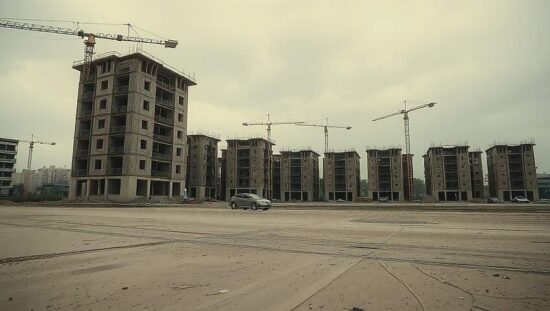A significant decline in residential construction starts has been observed in Germany, according to a recent report by Bulwiengesa and the Federal Association of Free Housing and Real Estate Companies (BFW). The “Development Monitor” reveals that the number of construction projects initiated between the end of 2022 and the mid-point of 2025 has plummeted by 85%.
The downturn continues into 2025, with the area of planned or underway residential projects decreasing by more than five percent since the beginning of the year. Smaller towns and cities, categorized as “C and D locations” have experienced a steeper decline of ten percent, while larger urban centers have seen a six percent reduction.
Dirk Salewski, President of the BFW, described the data as a “wake-up call” emphasizing that the pipeline of new construction is dwindling rapidly. “What isn’t planned and built today will not be available tomorrow” he stated, warning of a postponement of necessary housing projects.
Bulwiengesa estimates that less than 200,000 new-build apartments will be completed in 2025. This falls considerably short of the annual need, which, according to the Federal Institute for Research on Building, Urban and Regional Development, stands at a minimum of 320,000 units. Salewski criticized the slow implementation of policy initiatives and expressed concern that the urgency of the situation is not being fully recognized.
Federal Housing Minister Verena Hubertz (SPD) remains optimistic, pointing to a reported improvement in sentiment within the housing sector based on the Ifo Institute’s data. She highlighted the government’s commitment to stimulating construction with €23.5 billion in investment for social housing projects by 2029.
Jan-Marco Luczak (CDU), a housing policy representative, announced plans for a shift in policy, including temporary eligibility for the EH55 building type and the introduction of building type E to allow for deviations from established technical regulations. The aim, according to Luczak, is to make construction more affordable by moving away from demanding and costly building standards. “We want to break the spiral of increasingly strict and cost-driving standards” he stated.





